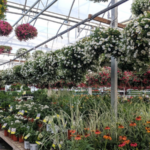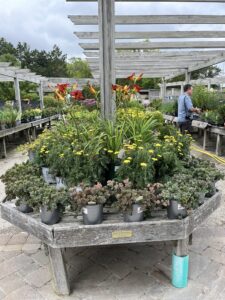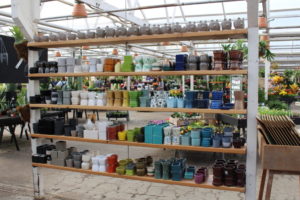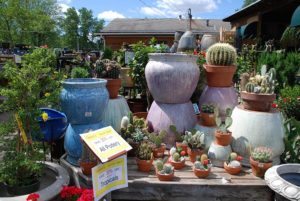Brand Benefits
Dr. Charlie Hall of Texas A&M University a good friend of mine (and our industry) and someone I’ve had the pleasure of working with in many different capacities ends all of his emails with a phrase by Cavett Robert: “People don’t care how much you know until they know how much you care.”
I’ve probably read this quote hundreds of times in Charlie’s emails, but its essence only really struck home with me recently. I’ll explain why shortly.
I’ve visited dozens of garden centers around the country this spring, both locally owned (LOGC) and big boxes. I recognize that, in many areas, it’s been a tough production season and selling season at retail due to erratic timing and weather conditions.
That said, overall the product I saw looked pretty good, in both the LOGCs and the boxes. From my viewpoint, there wasn’t a significant differentiation in product quality between the retail channels. The boxes have definitely upped their game in green goods, especially in stores serviced by Pay-By-Scan suppliers, not only in quality, but in presentation too. Granted, the LOGCs had a broader selection of product, especially in the tree and woody ornamental categories, but from an average consumer’s perspective, what the boxes offered satisfied their basic needs.
Based on what I saw in the products offered, the channels are becoming more homogenized, with more commonalities and less significant differentiation between them than in the past.
A Consumer Questionnaire
Many of the LOGCs I visited this spring I had never been in before. As I walked through the stores, I asked myself the following questions from a consumer’s perspective:
What is their brand message? What do they stand for in the marketplace? What sets them apart from the other retailers they share their marketplace with? Why should a consumer choose them from the other choices available in the marketplace? What are they really selling?
All too often, what I saw was that the retailers equated their brands with product. But in today’s marketplace, where the competition is getting better every year, product alone doesn’t provide the same differentiation it used to. And, as we’ve discussed many times in past columns, the consumer isn’t coming to the retailer just for product. Rather they are looking to the retailer to provide them with solutions, success, satisfaction, inspiration, experience and an enhanced quality of life; they are looking to the retailer to provide these through the plants and services they offer. Product is the means to the end results consumers want, not the end unto itself!
Too often we talk to the consumer about the features of our products, the scientific descriptors and the plant behaviors in horticultural terms. But we need to understand, as the consumer does, that there is a distinct difference between product features and benefits. Features talk about the product itself; benefits talk about what the product does for the consumer. Though they might not intuitively know it, what the consumer is really shopping for are the benefits our plants, trees and flowers offer the quality of life enhancements, namely the emotional well-being, psychological well-being, the social well-being, the physical well-being and the spiritual well-being, offer some real tangible benefits and
some intangible.
A successful brand isn’t just about the products and services; rather it’s built around the consumer and product benefits that make your company special when compared to other retailers in your marketplace. Focusing on the benefits you offer is what turns your company into a brand. And it’s this kind of brand that breeds loyalty and relationships.
Case in Point
Let’s look at a few real-life examples. Ford and Mercedes both build cars that transport you from Point A to Point B. Granted, Mercedes does offer some features and a better ride than Ford, but they are both basic transportation. So what justifies not only a higher price, but more importantly, an almost rabid brand loyalty from Mercedes owners? It’s not the features alone; it’s more the prestige of ownership and the image of being successful that the Mercedes brand conveys, the non-product benefits.
Technology companies introduce new items all the time. But what is it about new products introduced by Apple that causes people to stand in line for hours just to be one of the first people to purchase a new product (especially when you know that there will be hardware and software bugs in the initial product runs)? Sure, there may be some new technology features in the product, but is that what these first-adopter consumers are buying? Or are they really buying what the Apple brand conveys hipness and coolness, the image of being a leading tech-savvy, cutting edge individual, the non-product benefits.
There are lots of restaurants around, all offering good tasting food and daily specials. So what sets Olive Garden above the rest in this highly competitive industry? It has built its brand around offering a place where families can meet for a real family-style meal. Its entire brand experience, from its advertising to its website, to its promotional messages is all built around this non-product differentiated benefit.
Most consumers believe that they are purchasing based on features, but the reality is that they are choosing one brand over the other because they trust it, they’re familiar with it, they’ve relied on it and they’ve had success with it in the past or it’s been highly recommended by someone they trust. These are all non-product benefits, supported by the performance of the product itself, and these benefits have turned the products and retailer into brands. Consumers have relationships with brands, not with products!
Remember the definition of a brand: a promise of trust and reliability established over time based on experiences. Note that this definition doesn’t talk about features, but to the intangible benefits that a consumer has come to enjoy and expect from a retailer or product.
The retail marketplace in which we all operate is getting more competitive every day, and consumers not only have more choices on where to spend and on what product categories, but also they have become more discerning in identifying what they need, why the need it and why to select one retailer over another. It’s more critical than ever we create and deliver a brand promise built on the benefits you as a retailer and the products in your assortments provide based on how you and your products can enhance your customers’ quality of life. This is the key differentiator that can raise you above the other choices and drive loyalty, relationships and sales.
Cavett Robert’s quote that Charlie Hall references is spot on when I think about building a brand relationship based on benefits. Another quote that addresses this in a similar way says, “Customers don’t necessarily remember what you do for them as much as they remember how you made them feel.”
And at the end of the day, how they feel is all that really matters…


















 Videos
Videos





